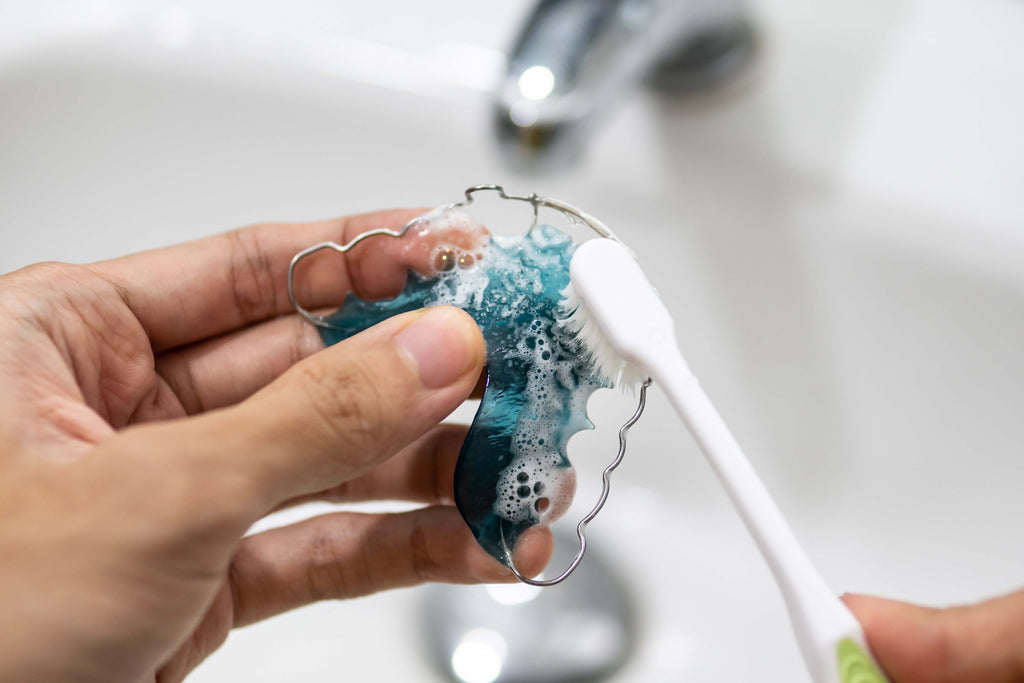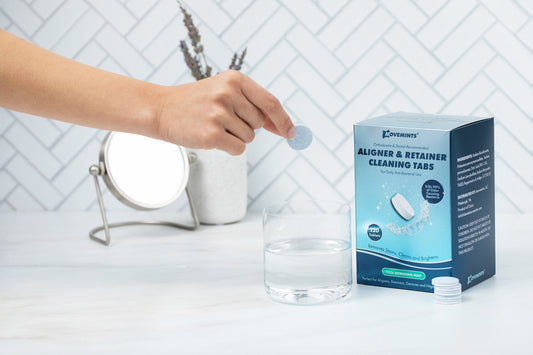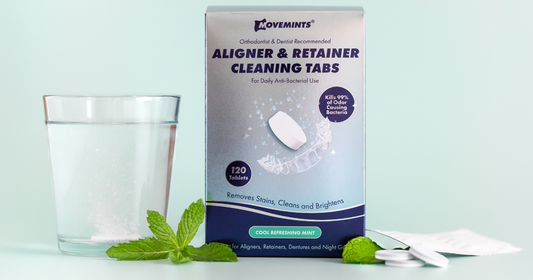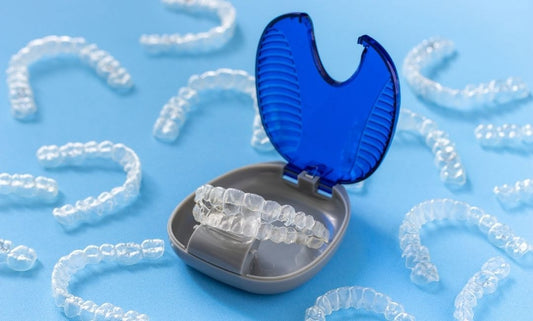A Parent's Guide to Retainers for Kids
Help them keep that beautiful smile they worked so hard to achieve!
This one’s for all the parents out there! Have you been told that your child has to wear their retainer all day long? It's true...retainers for kids are super important because they literally retain those results you spent time and money to achieve!
It’s an amazing feeling when parents get their kids across the “finish line” with their orthodontic treatment, but the work isn’t over yet! In fact, for children who have worn fixed appliances (a.k.a. traditional braces), it can be a rude awakening to have to be responsible for a removable retainer all day, everyday for months and months. And for parents, it introduces a lot of questions, which we will address in this article:
- What type of retainer is the best choice for my child?
- How can I keep it clean?
- How can I keep it safe?
- How can I ensure that it continues to fit properly?
- How can I keep it in my kid’s mouth?
- What are some other general tips for retainer use?
What Type of Retainer is Best for Your Child?
Let’s start with some general retainer information (and it's good to know your options for your kid's treatment). Your retainer may be either removable or fixed, depending on the type of teeth straightening you choose (Invisalign vs. braces). If your kid's retainer is fixed, it is cemented to the backs of their teeth, and you won't have to worry so much about their fit, or your child removing and losing them.
Removable retainers can either be acrylic, which is the most common type, or clear. Acrylic retainers are often brightly colored and include flexible wires, while clear retainers are exactly what they sound like — clear plastic that fits right onto your teeth! Because they’re more difficult to see, they’re a popular choice for adults. But for kids, a removable retainer introduces the variable of loss or non-compliance with wear time. On the flip site, removable retainers are easier to clean.
It can be difficult to get used to a retainer at first, as they tend to impede speech and increase saliva production, but these problems should decrease as you get used to your retainer. Plus, with the tips below, you, or your kid, will be an expert in no time!
How to Clean Retainers for Kids
Though it can seem complicated at first, keeping a retainer clean is actually very easy — it’s much like keeping the rest of your mouth clean. Though your retainer should be cleaned every day, perhaps even several times a day, there are also warning signs that let you know when it is absolutely imperative to clean it. These signs include bad tastes or smells, a cloudy appearance, or white spots on the retainer. Remember: never go more than a week without cleaning your retainer, and even a week is stretching it!
Simple Cleaning Techniques
The most important thing to remember is to rinse the saliva off of a retainer before it gets put away in its dark, damp, unsanitary case. Know where bacteria thrives the most? Yea… right there. What should you do? Simply use a toothbrush and some mild toothpaste and scrub away.

Try one of these new retainer case options from OPRO (available on Amazon) which have built in antimicrobial properties! If the retainer gets a good rinse every time it is removed, it won’t build up the same plaque and tartar that builds up on our teeth.
You can also use a small amount of dish soap to scrub them instead of toothpaste, and rinse them thoroughly with a steady stream of cool water. Try to think of retainers just like anything else you would put in your mouth (silverware) or put your food on (plates)!
Soaking Your Child's Retainer
If scrubbing your retainer regularly just isn’t doing enough for you, another option is to soak it to get it super squeaky clean! Retainer Brite makes a product for exactly this purpose, or you can make your own mixture out of 1 part sodium hypochlorite bleach with 10 parts water. This should easily eliminate any stubborn bacteria that could be making a home on your retainer. Just be sure to measure correctly and rinse thoroughly!
Cleaning a Fixed Retainer
Fixed retainers, whether glued to each individual tooth or glued to the teeth on the ends, require more effort to keep clean. But it is a very important part of maintaining retainers for kids and oral hygiene in general. Proper brushing and oral rinsing takes care of routine maintenance, but it is important for your child to floss regularly to remove food particles and prevent plaque build up.
For this job, you'll need to acquire a floss threader to get around the wires. Most dentists recommend flossing each day, so strive to do this with your child as often as possible!
Keeping Your Child's Retainer Safe
What’s the best way to keep a retainer safe? If it’s not in your mouth, it should be in the retainer case — plain and simple! But as every parent can attest, children aren't always the best at following instructions. Retainers can easily get lost or damaged, whether its the family pet, leaving them on a lunch tray, or accidentally being run through the washing machine inside a pocket. Or if a retainer is shoved away into some corner of a backpack or sports bag, they can get bent out of shape, or crushed completely.

Help your child avoid accidental loss by providing them with several retainer cases to go with their various book bags, travel bags, and sports bags. Keep a few in the bathroom and their rooms as well, just in case. Fortunately, cute retainer cases are easy to find and very affordable, especially when you consider how much a retainer costs to replace!
Even with all these precautions, accidents happen: retainers get left behind after practice, or in a friend’s bathroom after a sleepover. Just in case, write your child’s name and your phone number on their retainer case. That way, as long as their retainer is in their case when it’s not in their mouth, it can be returned to its rightful owner easily!
Keep Retainers Away From Heat
This should be somewhat of an obvious tip, as removable retainers are after all made of plastic, but when dealing with kids, any manner of mischief is possible. Just remind your kids that plastic and heat don’t make a good combination — an example would be on a car dashboard on a hot summer day — and that forgetting can be an expensive mistake to make! Also, don’t forget that putting your retainer in boiling water is not an advised way to clean it — even if it doesn't melt, it will soften to the point of losing its ability to keep teeth in their newly straight positions.
Keeping a Proper Fit for Your Kid's Retainer
Will retainers always fit? The quick answer is — if they’ve been worn as instructed, then yes! But life comes at us fast, and sometimes we go on vacation or to a sleepover and forget the retainer. Or maybe you live in the Northeast during the winter, and, like everyone else, you get plagued with a stomach bug or the flu and have to miss a few days and nights.
If your child is using removable clear retainers and you notice they aren't fitting as snugly as they once were, have them bite gently on an aligner chewie or some of our patented Movemints Clear Aligner Mints. The groove in each of our mints fits conveniently between the top and bottom aligners, and facilitates the gentle chewing exercises that help them seat correctly over teeth.
Encouraging Your Child to Wear their Retainer
What’s the best way to keep retainers in your or your kid’s mouth? A proper fit is critical to keeping the retainer comfortable and unnoticeable, and fresh breath provides the confidence your kid needs to go about the day with retainers in. Parents, do your kids — or yourself! — a favor and get them some of our Movemints, orthodontist-approved and formulated to promote oral health. We made Movemints sugar free and sweetened with a therapeutic dose of xylitol, which dentists have recommended for ages for its oral health properties and dry mouth-reducing effects.
Especially when you’ve just finished your orthodontic treatment, wearing a retainer can feel like a chore, but it’s just a fact of life after braces. Following this advice can help you and your child retain that new smile and keep the long term costs of teeth straightening to a minimum. But remember, if you face any serious problems with your retainer, like breakage or major distortion, it’s time to pay your orthodontist a visit!
And even if you follow all of these tips perfectly, retainers do wear out over time, so don’t expect one to do you for life. But, following this advice should ensure that the your child's retainer you have now lasts as long as possible!




